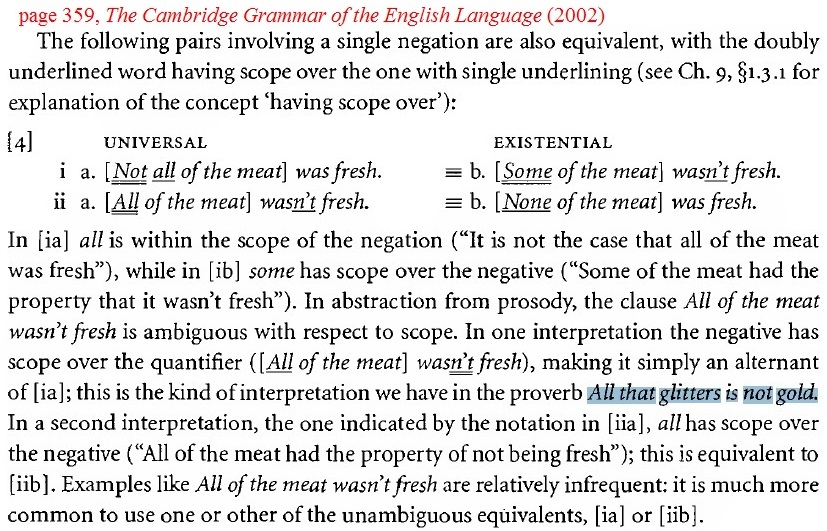Helping Lawyers with Their Prose
By Jon N. Hall
President Trump wants to forge
new trade agreements with other nations. He also wants to end the nearly
70-year conflict with North Korea and get a peace treaty. But what are
treaties, trade pacts, and contracts if not language? Let’s hope the lawyers
drafting such documents understand the conjunction “and/or.”
In the third edition of Fowler’s Modern English Usage (1998), the entry for “and/or” reads: “First recorded in the
mid-19c. in legal contexts, and still employed from time to time in legal documents,
and/or verges on the inelegant when
used in general writing.” On page 93 of Webster’s Dictionary of English Usage (1989), the entry for “and/or” presents an excellent little
history of the term which lawyers should read: “And/or thus began in a cloud of legal ambiguity, but such an
inauspicious infancy proved no deterrent in its use.” The entry also alleges
that “the interpretation of and/or
became a matter of litigation in 1854.”
In Chapter IV, “Words and
Expressions Commonly Misused,” of the fourth edition of Strunk and White’s
popular The Elements
of Style, the entry for “and/or” reads: “A device, or shortcut, that damages a sentence and often leads to
confusion or ambiguity.”
Far more opprobrium for
“and/or” is meted out by Bryan A. Garner, perhaps the
dean of American usage experts. In Garner's Dictionary of Legal Usage (2011), we read that “and/or has been vilified for most of its
life -- and rightly so.” His entry for “and/or” (page 57) cites several court cases
that do indeed vilify the term. Garner also rails against the term in Lesson #209: Ban “and/or” at his website LawProse, where he reports that “and/or has
been held to invalidate provisions in affidavits, wills, indictments,
judgments, contracts, statutes, and findings of fact.”
Page 57 and Lesson #209 are
required reading regardless of whether one is
making law or merely practicing it. But
the hubbub surrounding “and/or” by Garner and others needs a bit of explication.
You see, “and/or” is the equivalent of the “inclusive or,” and the “inclusive
or” is both grammatical and logical.
The first thing one must
understand about the conjunction “or” is that it can be either inclusive or exclusive.
One can usually tell which “or” is intended by the context. For instance, were
an ad for a job to stipulate that applicants must possess a college degree or experience, folks wouldn’t expect to
be denied an interview if they possess both, the “or” would be inclusive.
However, if the FBI says you can become an informant or go to prison, they’re using “or” in its exclusive sense. Whereas
the “exclusive or” stipulates A or B but not both, the “inclusive or” is
rather less stern with its alternatives: A or
B or both.
The “inclusive or” should be
used when it doesn’t matter whether one or more than one is the case. For
instance, if your host asks you if you’d like your drink freshened, and you
say, Yes, thank you; I could use a splash
or two, it’s of no importance whether you get one splash or two; you don’t
really care.
Correctly used, the “exclusive or” has perhaps the most
unambiguous “sense” of any conjunction. With the “exclusive or,” only one
alternative can obtain, i.e. be chosen or true. If you are issuing an
ultimatum, then the “exclusive or” is for you. If anyone says “or else” to you,
know that the “or” is exclusive and that you had best choose what came before
it. In binary uses, such as “on or
off,” “yes or no,” and, yes,
“exclusive or inclusive,” we’ve got
an “exclusive or.”
But sometimes the “exclusive or”
needs a little help. If one needs precision, then one may need to add
qualification, such as: Coffee, tea, or
milk, but only one; Pie or cake, but not both. Also, the correlative conjunction “either” can be used to indicate the exclusive: Either
eat your vegetables or get no dessert.
Our two English language
“ors” both have their own analogs in formal logic and in computer programming.
The analog for the “inclusive or” is OR while the analog for the “exclusive or” is XOR. The execution of a computer program might help clarify
the difference between the two “ors.” Both “ors” make comparisons. When an OR
in a computer program makes a match, the program can bypass all the remaining comparisons; it makes no difference
whether any remaining comparison would produce a match or not because the
condition has been met. But when an XOR makes a match, the program must make all
the remaining comparisons to ensure that they don’t match, as XOR allows only one match.
One problem for Anglophones
is that there doesn’t seem to be a “default
or” in the English language, which has only one word for both OR and XOR. That
means we must work around little old “or” with “or both,” “but not both,” and other
added verbiage. Although the English language is known for its neologisms, i.e.
its creative new words, one doubts that many Americans would be very receptive
to this choice: Coffee, tea, xor
milk. (Sic.)
In his aforementioned Lesson #209: Ban “and/or” at LawProse,
Mr. Garner provides some fine examples of how “and/or” can foul up legal
language, which he then shows us how to correct. The problem with this rogue
conjunction is using it when what one actually intends is “and” or the “exclusive or” but not both. In other
words, it’s when one intends either “both” or “either” (sic).
Garner is right to urge
banning “and/or.” But attorneys need to master all the conjunctions, because
the last thing a lawyer needs is to have his client standing before some judge
who’s making rulings based upon such piddling matters as the original intent of
some dang conjunction.


Comments
Post a Comment